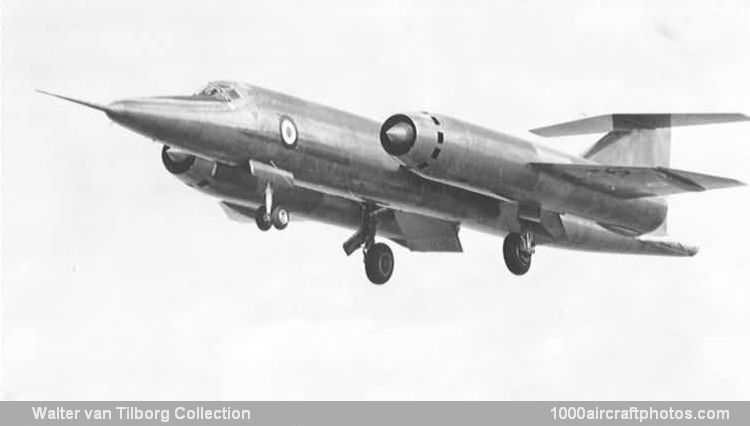12/31/2019. Remarks by Johan Visschedijk: "In February 1953 Bristol was invited by the Ministry of Aviation to tender to Specification ER.134 for an experimental research aircraft capable of reaching and sustaining twice the speed of sound for long enough to enable steady-state kinetic heating effects on the structure to be experienced and recorded. Unlike most research aircraft in its class, the resulting Type 188 was designed to be flown conventionally and to take off on a normal runway. Experience gained in its development, structurally, aerodynamically and in the evolution of its systems, was thought to be able to contribute to the design of future supersonic transport aircraft. Entirely new techniques had to be evolved for the fabrication of the Type 188 in welded stainless steel, to meet the problems of kinetic heating.
The basic material used was Firth Vickers F.V.520 stainless steel, able to tolerate a maximum temperature of 500°C. In its original form, the aircraft was intended not only for structural and aerodynamic research, but also for investigations into armaments and other propulsion systems. Some of these requirements were subsequently modified to conform with changes in British defense policy. By 1955 a layout had been established comprising a minimum size fuselage with twin turbojet engines in nacelles mounted half-way along the span of a swept thin wing.
As a result of both wind-tunnel tests and rocket-propelled model flights at high speed and altitude, the aerodynamic shape was modified to give a basically rectangular wing plan between the nacelles, with small swept-back outer wings having horn-balanced ailerons. The all-moving tail plane was raised to the top of the fin and the chord of the latter extended to cater for single-engine failure at take off. A very unusual design feature was that, before the main landing gear was retracted, the single main wheels were rotated 90° to horizontal position. Originally Rolls-Royce Avon RA.24R engines were proposed, but later 14,000 lb (6,350 kg) st de Havilland Gyron Junior DGJ.10 engines became available and were substituted.
Originally, six examples of Type 188 were ordered, but three were cancelled as an economy measure, and the final contract covered the construction of three airframes, one of which was for structural test; this was delivered by road to Farnborough in May 1960. The first of the two fully equipped prototypes (s/n XF923), was rolled out the factory at Filton on April 26, 1961 for comprehensive pre-flight tests, including engine runs. The intake design posed several problems, and the aircraft was ready for taxying trials in February 1962.
Unfavorable weather conditions delayed the first flight on many occasions until April 14, when Bristol's Chief Test Pilot G.L. Auty took off on the first flight, which was also a delivery flight to Boscombe Down, lasting 23 min. XF923 made its first public appearance in flight at the SBAC Show in September 1962 and returned to Filton on November 15 on completion of the initial test program. The second prototype (s/n XF926) made its maiden flight at Filton on April 29, 1963. At the time the Type 188 ranked among the fastest conventional aircraft in the world capable of unassisted take off and landing from normal runways.
No results of the flight tests have been published although it is known that the aircraft's research program was cut short because of the high rate of fuel consumption at maximum speed. The last flight was made by XF926 on January 12, 1964, after storage it became an instructional airframe, coded 8368M, at RAF Cosford and is presently preserved at the RAF Museum at that base. XF923 has been scrapped."
